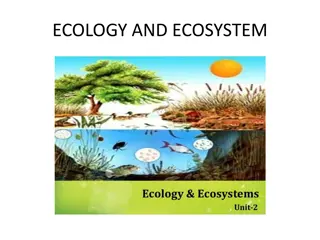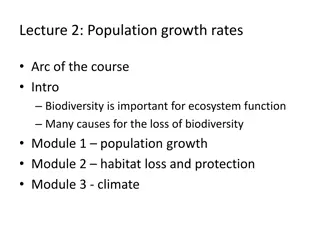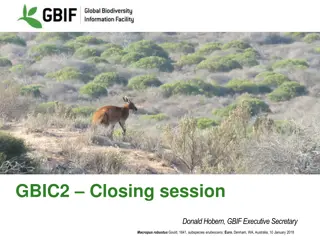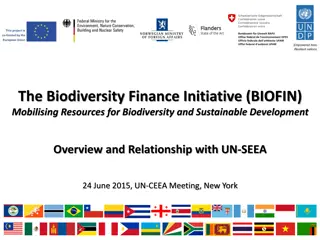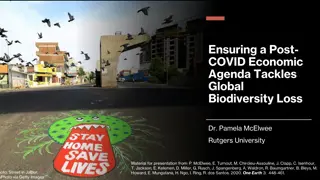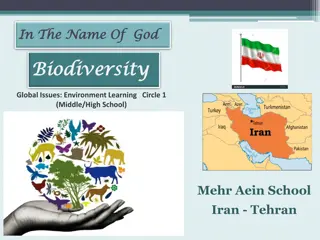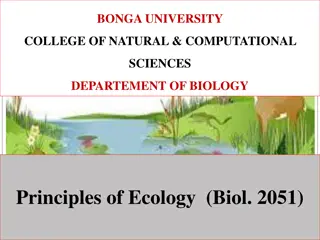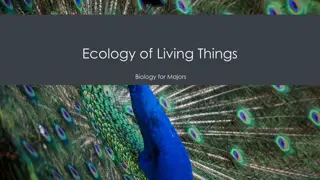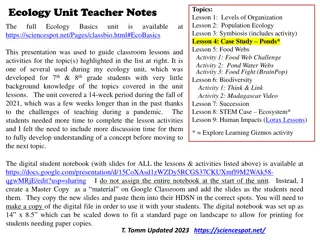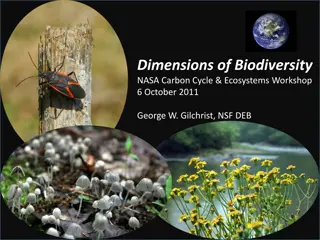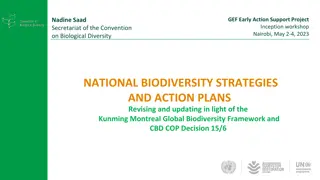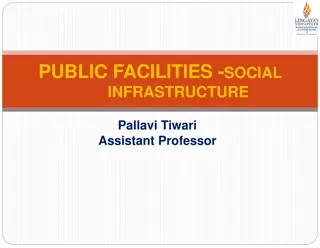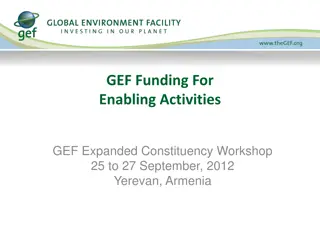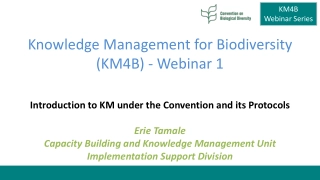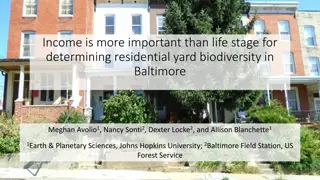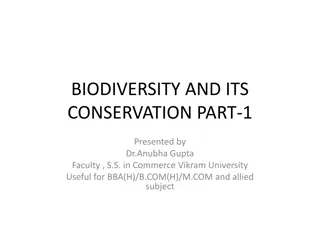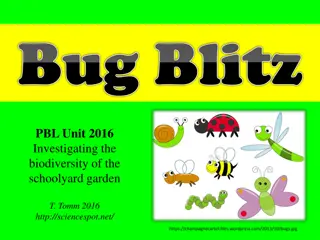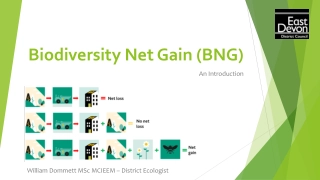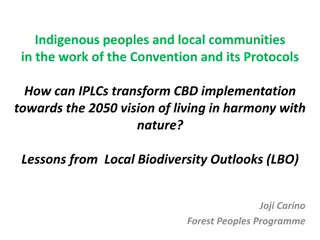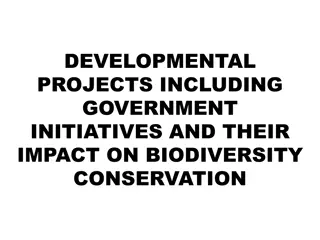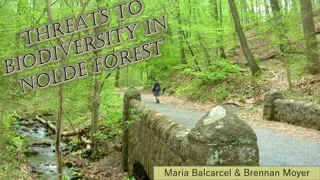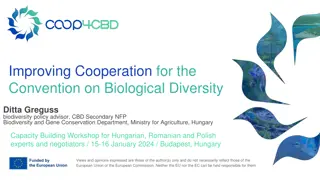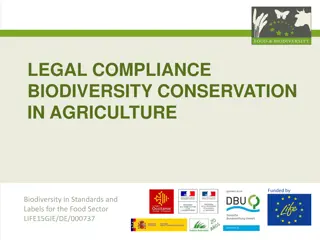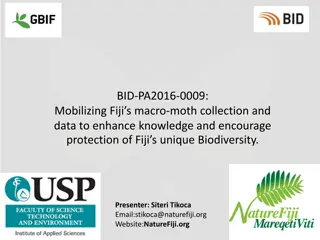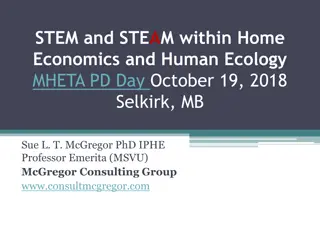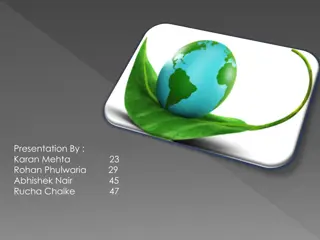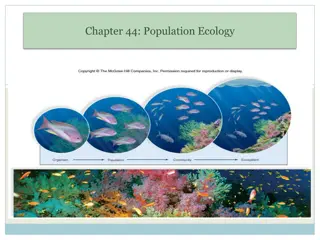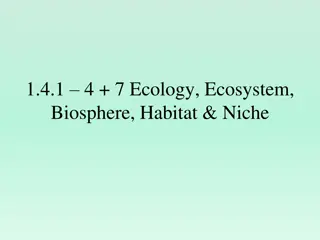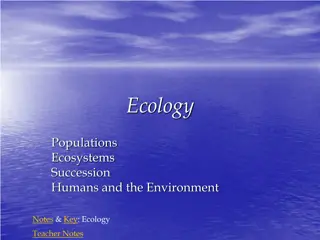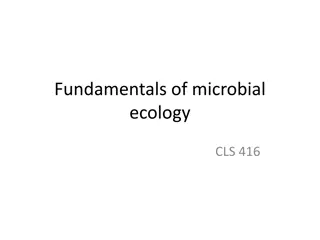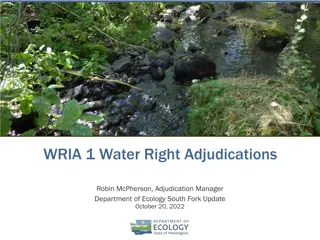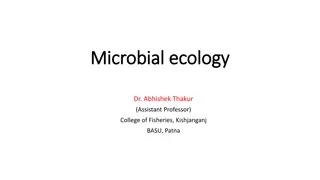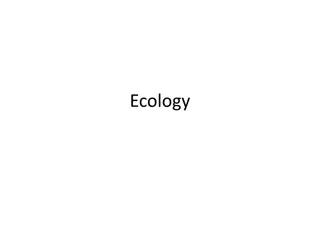Understanding Ecology and Biodiversity
Ecology explores the dynamic interactions between living (biotic) and non-living (abiotic) factors in ecosystems. It delves into selective breeding, protein structure, hormones, placenta function, and the vulnerability of embryos during early development. Meiosis, mRNA translation, feedback mechanisms, and starch indicators are also discussed. The images highlight the importance of biodiversity for ecosystem stability, genetic diversity, and potential agricultural and medical breakthroughs.
Download Presentation

Please find below an Image/Link to download the presentation.
The content on the website is provided AS IS for your information and personal use only. It may not be sold, licensed, or shared on other websites without obtaining consent from the author. Download presentation by click this link. If you encounter any issues during the download, it is possible that the publisher has removed the file from their server.
E N D
Presentation Transcript
DO NOW: What is the energy used to power all cellular activities? What is selective breeding? What are the building blocks of proteins? Name a female hormone: What is the purpose of the placenta? Why is the embryo at the greatest risk during the first 8 weeks of life? What is meiosis? TAG CTA <-- Translate this into mRNA: Name a feedback mechanism that occurs in the human body: What color does starch indicator turn in the presence of starch?
Ecology: Study of both biotic and abiotic factors interacting BIOtic- living- plants, animals, foods, mates Abiotic- Nonliving- sunlight, soil, pH, temperature, water
Ecology: Study of both biotic and abiotic factors interacting BIOtic- living- plants, animals, foods, mates Abiotic- Nonliving- sunlight, soil, pH, temperature, water The growth and survival of organisms depends on the conditions of the environment If an organism is not adapted for an environment, it will not be able to compete for resources.
The carrying capacity of an ecosystem is the maximum number of species that can be supported. The more resources there are, the higher the carrying capacity The less resources there are, the lower the carrying capacity The carrying capacity can change from year to year
Biodiversity Because of evolution, there are many different types of life. Biodiversity is the amount of different species in an area
Biodiversity Farms have NO biodiversity, because they focus on 1 or 2 species. Rainforests have a lot of biodiversity, because there are so many different types of life living there.
***Why is biodiversity important?*** Biodiversity increases the STABILITY of an ecosystem The more biodiversity there is, the more genetic diversity there is. Genetic diversity increases the chances of survival!! Biodiversity may lead to discoveries in agriculture and medicine!
Ecological Succession Biodiversity does not happen overnight. Stable ecosystems are built over time through ecological succession. A stable ecosystem cab be destroyed by natural disasters (fire, volcano) or by human activity (deforestation)
Each step of ecological succession modifies or changes the environment to make it more suitable for other organisms to move in. http://www.biorewind.com/wp-content/uploads/2012/04/ecological-succession-e1335917843565.png *Less Stable *Less Biodiversity *More Stable *More biodiversity
Roles in the ecosystem Heterotroph- Autotroph- Producer- Consumer- Decomposer- Predator- Prey- Parasite-
Roles in the ecosystem Heterotroph- relies on others for food Autotroph- makes its own food Producer- makes its own food Consumer- eats food Decomposer- breaks down dead organisms and recycles nutrients/compounds back into the soil Predator- hunter Prey- hunted Parasite- causes harm to host
Energy in the Ecosystem All energy starts with the sun, but only producers are able to use this energy Photosynthesis Energy flows in one direction only Chemical energy is passed in a food chain
Organisms use chemical energy to make ATP Cellular Respiration ATP is never transferred!!!! ATP energy is used and LOST to the environment as heat!



